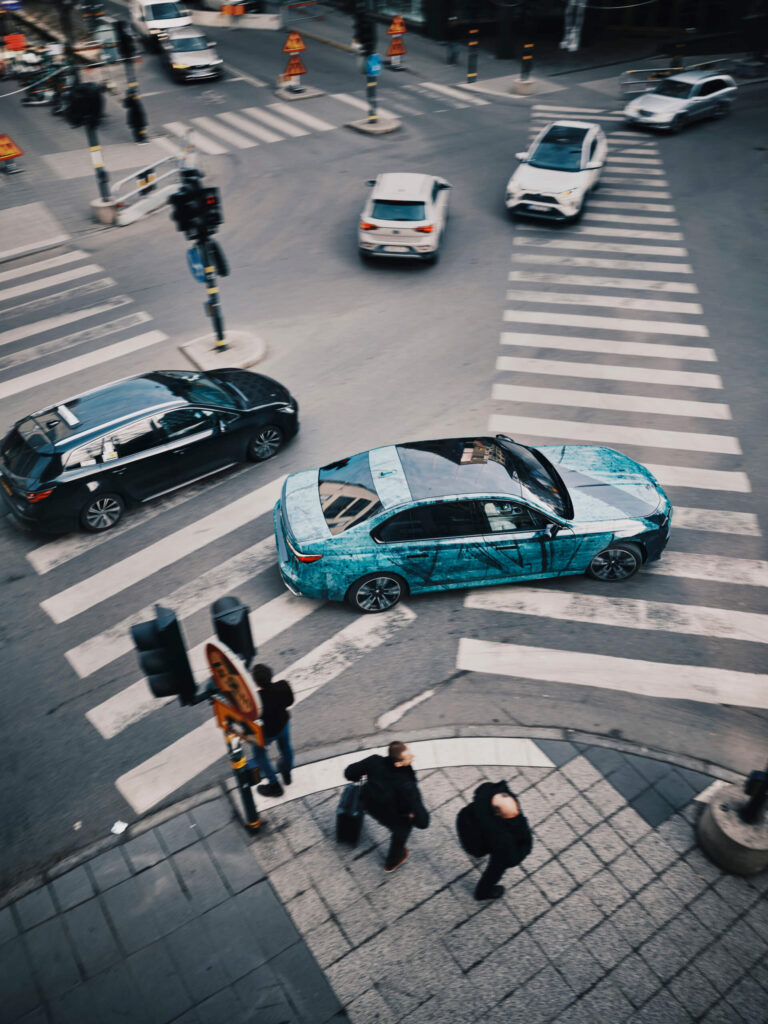
Photography by Oskar Omne (2025)
Few spaces more clearly exemplify the convergence of culture, creativity, and commercial interests than today’s art and design fairs. Once largely the domain of galleries, collectors, and industry insiders, these events have transformed into multifaceted platforms where cultural production and commercial strategy intersect. From Design Miami to Seoul’s Frieze Week, the role of the fair has expanded beyond its initial purpose as a transactional marketplace to become a temporary ecosystem of influence, bringing together artists, designers, curators, collectors, media, and, increasingly, brands. Although sponsorship is nothing new in the history of fairs, brand involvement today often reflects a deeper strategic intent: to embed into the cultural infrastructure, communicate values through aesthetics and cultural proximity, and engage with communities that shape global taste. But how are brands strategically integrating into art and design fairs, and what pathways exist for emerging labels to participate meaningfully?
Finding strategic footholds in the fair economy
With roots stretching back centuries, fairs have long been essential to the global creative economy, from the artisanal fairs and religious festivals of Medieval Europe, through the imperial 19th-century model of the International Exhibitions to entirely digital iterations in recent years. The current fair structure as traveling circuits of tightly curated, high-visibility events, crystallized in the 20th century with the rise of seminal design platforms like the Milan Triennale (1923) and Salone del Mobile (1961), and art market pioneers such as Art Market Cologne (1967) and Art Basel (1970). In the 21st century, their influence expanded dramatically, both in terms of the number of events and the diversification of global locations—all driven by globalization, the growth of the luxury sector, and technological advancement. New destination art fairs have emerged around the world, with a notable rise in Asian market hubs and major players such as Art Basel Hong Kong and Frieze Seoul steadily cementing their status in the region. This relentless international growth has reshaped the fair’s infrastructure introducing new commercial features, though not without challenges, from increased competition to skyrocketing costs and environmental issues, ultimately building a model that has often been criticised and deemed a victim of its own success. While the enforced hiatus during the COVID-19 pandemic inevitably sparked questions about the future of the fair format, the industry proved its resilience, surviving a year of near hibernation. According to the 2025 Art Basel and UBS Art Market Report, even as art market sales contracted for the second consecutive year in 2024, “Art fairs continued their critical role in market connectivity, with 31% of dealer sales occurring through these channels, and serving as vital hubs for collector engagement and discovery. The increase in the share of fair sales from 2023 underscores their enduring value, particularly for international connections, with the overseas fair share rising by 2%. This resilience highlights the importance of in-person viewing and community-building that fairs foster.”
Despite the post-pandemic upswing, the fair system faces new pressures connected to geopolitical tensions, economic instability, and shifting buyer behaviors. Markets are more segmented and audiences more selective, putting organizers under pressure to craft differentiated, city-specific experiences that feel relevant and resonant, particularly for younger, more diverse visitors. This has created a strategic opening for brands seeking cultural integration and legitimacy, while also connecting with design- and art savvy audiences. As Elisabetta Caprotti, News and Lifestyle Editor at Vogue Italia , notes of Milan’s renowned Design Week, “Salone and Fuorisalone are an ideal stage for luxury brands to express values such as artisanal excellence, innovation, and attention to detail. Participating means positioning themselves in a context of high creativity, where design is a universal language. Luxury, today more than ever, is a question of experience, and these events allow the creation of immersive narratives that involve the public on an emotional and sensorial level.”
The London-based fashion label COS perfectly exemplifies this approach. Across several editions of Salone del Mobile, the brand has commissioned large-scale architectural installations—minimalist, precise, and deeply aligned with its visual language to celebrate the brand’s inspirational roots in architecture and design. Over the years, they worked with an array of talents, including Sou Fujimoto, Nendo, Snarkitecture, Phillip K Smith III, and Arthur Mamou-Mani. The results are experiential art environments that serve as spatial expressions of the COS identity, reinforcing its reputation for thoughtful design and structural beauty—without even the need to display a single piece of clothing.
This is the soft power of the fair: by integrating into these environments, brands are able to enter the conversation through alignment rather than traditional advertising. What’s more, as the fair circuit increasingly expands into new global hubs such as the Middle East and Southeast Asia—these events have become essential points of convergence for brands seeking to access a global yet culturally specific audience within fast-growing markets, often tailoring activations to reflect regional aesthetics, local collaborators, and context specific narratives.




Beyond traditional sponsorship
If, in the past, many labels approached art and design fairs by simply sponsoring a space, putting up a logo, or hosting a cocktail party, today’s more discerning audiences have raised the bar. The most successful brand integrations now emphasize contextual relevance, collaboration, and co-creation. After all, fairs are full-immersion experiences par excellence. They are designed for in-person interaction and spatial storytelling—all qualities that lend themselves to creative brand activations. For the 2025 edition of Copenhagen’s 3daysofdesign, for instance, Leica’s activation took the form of a series of guided photowalks exploring Copenhagen’s design districts, organized around themes like art, color, and craft. Rather than remaining passive observers, participants became part of the narrative, using Leica cameras to document their journey and deepening their connection to both photography and design. Similarly, lifestyle brand Jo Malone London commissioned Korean designer Kwangho LEE to create an immersive installation for its booth at Frieze Seoul booth in 2024. Inspired by Jo Malone’s philosophy of scent layering, the work used materiality and fragrance to draw visitors into a multisensory environment celebrating craftsmanship, personal memory, and heritage. The collaboration reinforced Jo Malone’s brand ethos, while also offering the artist and designer a new platform. These examples reflect a broader shift of brand integration toward deeper connections and direct participation.
For such initiatives, traditional performance indicators still matter—sales, web traffic, media impressions, social engagement—although these now exist alongside something more intangible such as cultural credibility and resonance, which ultimately measure the ability of a brand to align authentically with a creative context and to be recognized as a valid contributor.
None of this can be achieved without a nuanced understanding of fair audiences and how to target each segment without diluting the message. In fact, broadly speaking, fair audiences fall into two primary categories. On the one hand, there is the professional art and design world: collectors, curators, gallerists, architects, and designers. These individuals are high spenders and influential tastemakers, which, for brands, means prestige and potential long-term collaborations. Reaching this group often involves precision targeting via private previews, co-hosted panels, exclusive product drops, or bespoke installations that foreground technical innovation and material quality. On the other hand, there is a broader but no less significant segment: design and art enthusiasts, students, and curious visitors who may not hold professional clout but engage deeply and emotionally with visual storytelling. This audience can be especially appealing for emerging brands, as these visitors are often early adopters attuned to creative authenticity and eager to champion brands that resonate with their values. Successful brand participation lies in the ability to modulate the experience by audience—for example offering invite-only gatherings for industry insiders while simultaneously staging interactive workshops or immersive installations that encourage social sharing and public engagement—without losing coherence.



Image courtesy of David Zanardi
The potential for emerging brands: why and how they can show up with purpose
The fair ecosystem is large and varied. At one end of the spectrum are behemoths like Art Basel, Frieze, TEFAF, Salone del Mobile, and Design Miami, enormous, frenzied events that draw international press, elite collectors, and global cultural players. At the other end are a myriad of local or niche fairs. Although smaller in scale compared to the mega events, these fairs are not necessarily small per se; in fact, some are premier fairs in their own right, but their niche offering offers depth, specificity, and the opportunity for more strategic alignment. They range from regionally or culturally focused fairs—such as Art Jakarta, which centers on Southeast Asia; 1-54 Contemporary African Art Fair, with editions in London, Marrakech, and New York, dedicated to contemporary art from Africa and its diaspora; and Stockholm Furniture Fair, featuring Scandinavian design and architecture—to events devoted to specific categories or media, like the celebrated photography festival Photo London, Art on Paper in New York, or the Genoa Boat Show. For brands, both marquee events and boutique or more independent outliers hold a strong appeal, but each tier has pros and cons that should beweighed carefully when aiming for strategic alignment. Major fairs offer unparalleled exposure and credibility, but participation or partnership can be prohibitively expensive. And even if a brand can afford to show up, it must still contend with the challenge of visibility in an already crowded field, which implies—especially for emerging names without a consolidated identity—the risk of being overshadowed. That’s why many emerging brands explore alternative strategies: pop-ups adjacent to official events, satellite activations, collaborations with artists or designers, and digital amplification before, during, and after the fair. Niche or local fairs, by contrast, can be fertile ground for brands that value grassroots engagement and cultural authenticity. While their reach may be narrower, their audiences are often more passionate and more likely to value experimentation and narrative alignment. Take for example Toronto-based Mason Studio’s activation during the 2024 edition DesignTO, Canada’s largest celebration of design. The interior design studio, whose mission is to create inspiring experiences that empower people and communities, hosted an interactive workshop exploring food and design traditions in partnership with local chefs. The project was modest in scale but rich in story—an expression of the city’s cultural texture and the studio’s values.
Emerging brands looking to integrate with purpose should approach art and design fairs with focus, intention, and creative adaptability. Key actions include:
● Research the fair ecosystem and find the right cultural fit. Participation should feel like a natural extension of the brand’s ethos and align with the fair’s creative values and cultural positioning.
● Invest in collaborations with artists, designers, local creatives or institutions. These partnerships not only lend credibility, but also root activations in the cultural fabric of the city or community where the fair takes place.
● Compensate modest budgets with creativity. Pop-ups, satellite events, or guerrilla-style activations that tap into the energy of the fair—without being part of the official program—can offer effective, lower-cost ways to engage art- and design-adjacent crowds.
● Leverage digital engagement. Building anticipation online, documenting the experience in real time, and extending the narrative beyond the event can amplify a brand’s presence.
● Network extensively. Relationships with gallery owners, curators, creative directors, and fellow brands, are the scaffolding that helps emerging brands build visibility, legitimacy, and future opportunities.
The following case studies illustrate the spectrum of strategies brands are deploying to engage with art and design fairs—from large-scale activations to contextually sensitive collaborations.

Exhibit at Art Basel Paris Public Program
Courtesy of Miu Miu
Miu Miu × Art Basel Paris 2025
Luxury brand Miu Miu has recently announced its collaboration with Turner Prize winner Helen Marten for the fashion house’s second year as official partner of Art Basel Paris’ Public Program, which features freely accessible exhibitions, installations, and curatorial projects across the French capital. At the 2025 edition of the fair, running from October 22 to 26, the British artist will present 30 Blizzards, a project fusing performance, sculpture, video installations, and movement in what has been described as “an immersive choreography of text, image, and presence.” The work, to be staged at the usual Miu Miu runway venue, the Palais d’Iéna, will explore the themes of time, language, structure and transformation and reflects Miuccia Prada‘s longstanding fascination with women’s stories. 30 Blizzards follows Miu Miu’s 2024 debut at Art Basel Paris with Tales & Tellers by interdisciplinary artist Goshka Macuga, and further reinforces the brand’s cultural positioning at the intersection of fashion and art, while also marking an important milestone in the fair’s history. Director of Art Basel Paris, Clément Delépine, described the partnership with Miu Miu as “Ambitious in scope and unprecedented in its nature,” explaining how it helps “illustrating the role of Art Basel Paris as an organization that creates bridges and fosters fruitful exchanges between creative industries.”
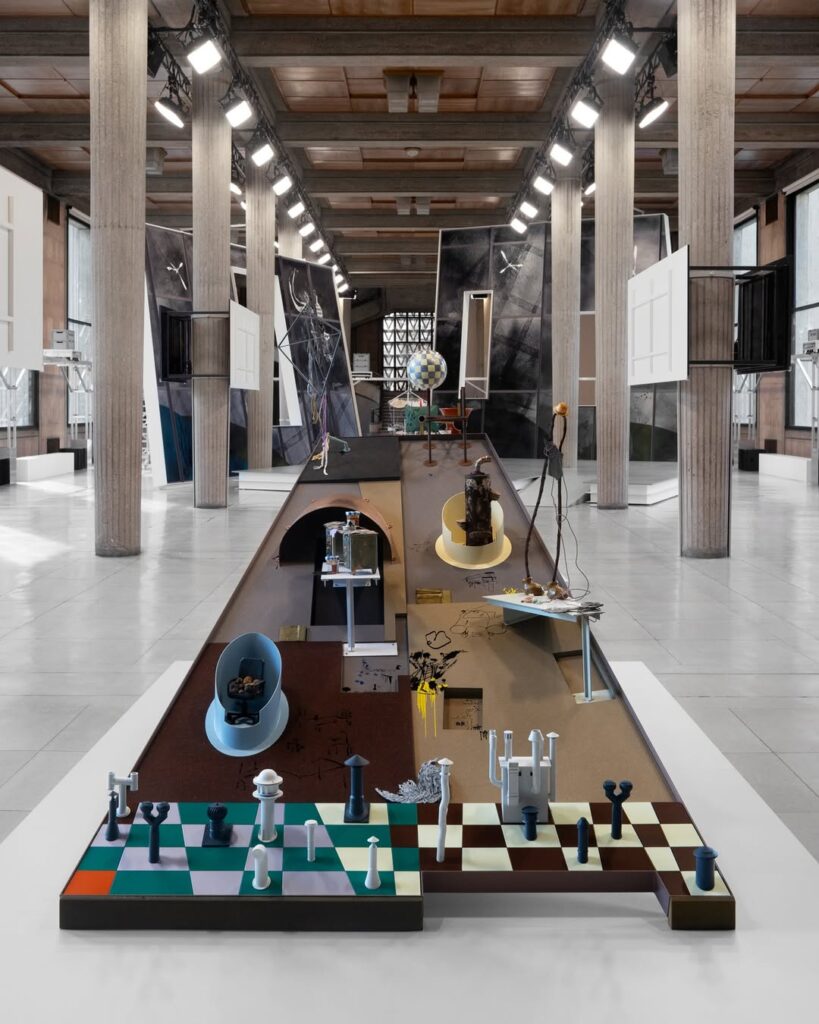
30 Blizzards
Photography by t-space studio

30 Blizzards
Photography by t-space studio
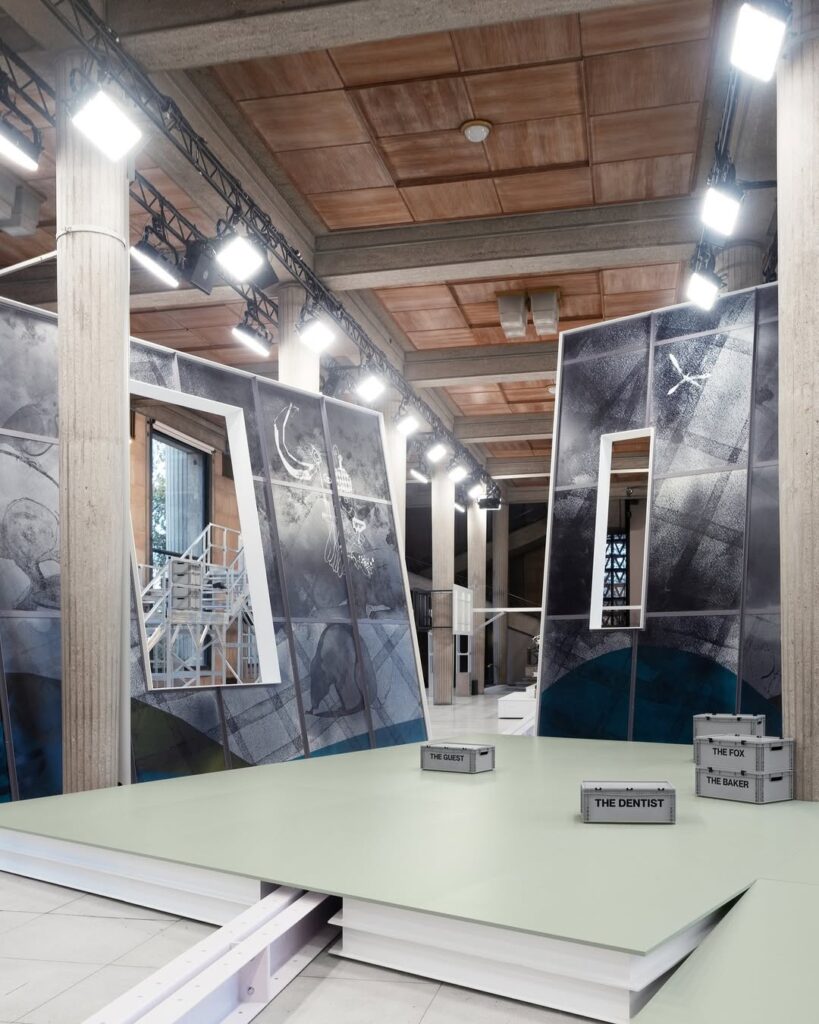
30 Blizzards
Photography by t-space studio
Aesop’s cultural programming
The high-end skin, hair, and lifestyle brand Aesop has long used cultural programming to align its brand with creativity and sensorial storytelling. At the 2024 edition of Hong Kong Art Month, which brings together world-renowned art fairs such as Art Basel Hong Kong and Art Central along with a rich calendar of arts and culture initiatives, the brand collaborated with artist Jaffa Lam to present Dusk to Dawn, a chromatic installation made from recycled umbrellas, housed in Aesop’s Gough Street location. Lam worked with the Hong Kong Women Workers’ Association to highlight sustainability and microeconomics. Aesop also produced a curated city guide to local artists, distributed across all its stores. This was not formal fair participation, but it was strategically timed, geographically targeted, and deeply aligned with the local scene, offering a very compelling example of how brands (emerging and established alike) can use timing and audience overlap to embed themselves in cultural dialogue without major spend. The brand is no stranger to official fair participation either. At Salone del Mobile 2025, Aesop presented The Second Skin, an immersive architectural installation infused with scent and tactility, inviting visitors into meditative interactions guided by the brand’s distinctive fragrances. This same year, it staged an Aromatorium at VOLTA Basel, and featured Zurich-based artist Hyunae Kang in their Basel and Zurich retail windows. The result: cultural resonance, visitor engagement and contextually relevant presence.
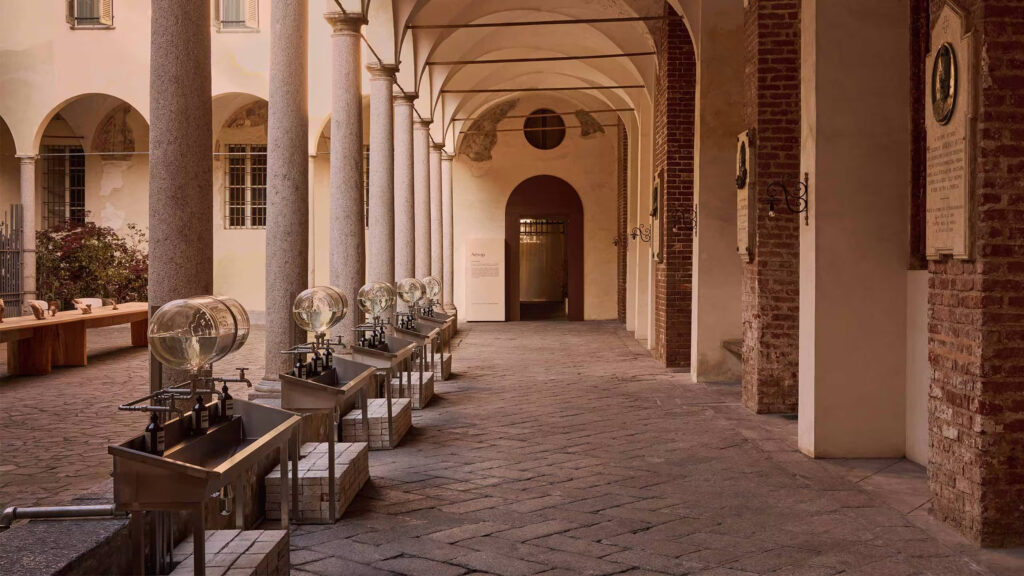

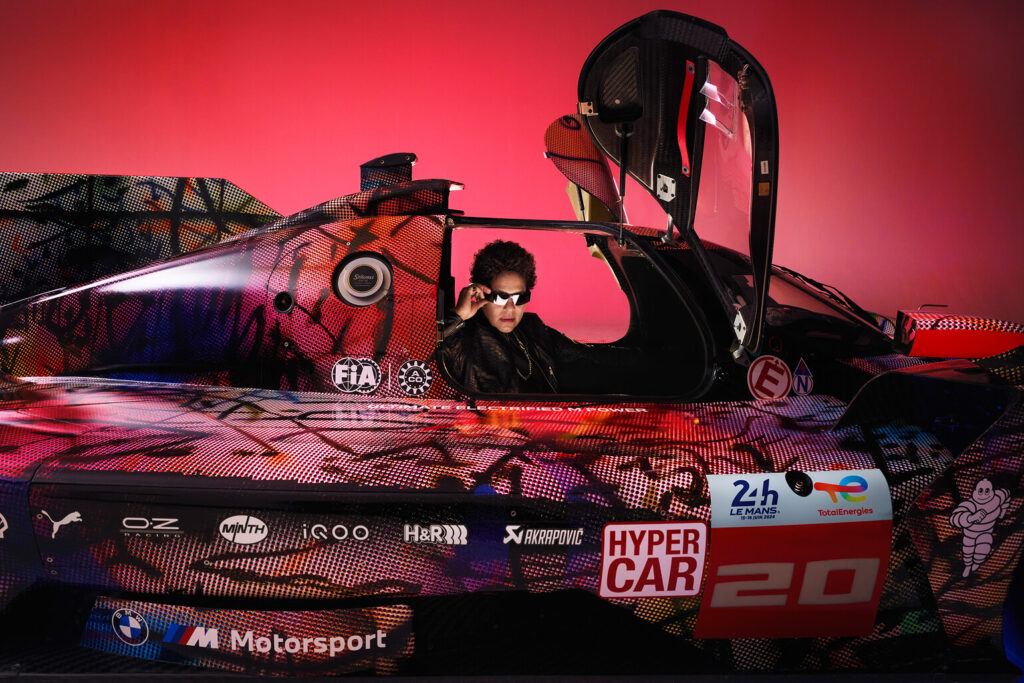
Photography by Tereza Mundilová © BMW AG (2024)
BMW Sweden × Market Art Fair 2025
For the 2025 iteration of BMW Art Commission, German artist Gregor Hildebrandt was selected to showcase his artwork during the Market Art Fair in Stockholm. His design was featured on six BMW electric shuttle vehicles driving around the city. BMW’s activation—embedding art into urban mobility—demonstrates an effective integration of brand identity, contemporary art, and local fair promotion. “BMW Art Commission supports the most promising artists of the day, and we are proud to be able to support the Nordic art scene together,” reads a statement by the German corporation.This year’s partnership also marked the 50th anniversary of the BMW Art Car Collection, a series of BMW vehicles transformed into “rolling sculptures” by international artists since 1975. To celebrate this milestone in the brand’s cultural legacy, four iconic BMW Art Cars designed by Alexander Calder, Roy Lichtenstein, Andy Warhol, and Jeff Koons, were showcased in Sweden for the first time during the fair. “This fourth year of partnership with Market Art Fair brings together art history, contemporary creativity, and the future of electrification,” said Johanna Kriisa, Managing Director of BMW Sweden.

Photography by Tereza Mundilová © BMW AG (2024)

Photography by Tereza Mundilová © BMW AG (2024)

Photography by Tereza Mundilová © BMW AG (2024)
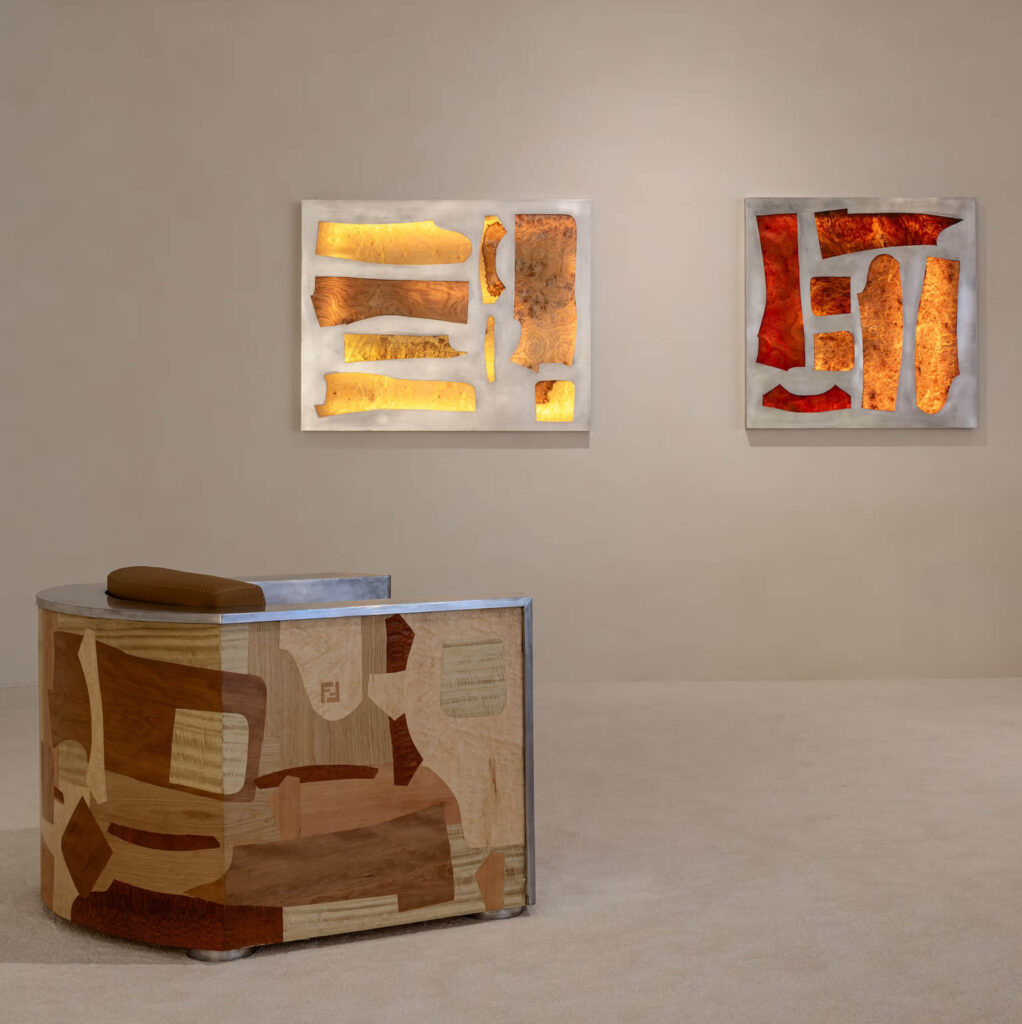
Photography by Robin Hill
Fendi × Design Miami 2024
In 2024, longtime Design Miami show partner, Fendi presented an exhibition by British designer Lewis Kemmenoe, featuring a furniture capsule collection titled ænigma . This was the latest in Fendi’s ongoing series of designer collaborations since its first participation in the end-of-year collectible design event in 2008. Among the pieces of the ænigma collection, which merged the sensibilities of Kemmenoe’s own material-led practice and the traditional craftsmanship of the fashion house, stood Kemmenoe’s reinterpretation of Fendi’s iconic Peekaboo soft bag. Reinforced by the creation of high-end, one-of-a-kind pieces oozing exclusivity, this presentation offered a compelling example of how brands can use fairs as an extension of their storytelling. In fact, while exhibiting artful objects, the installation extended the Fendi aesthetic—and its products—into new territories, aligning fashion with collectible design.
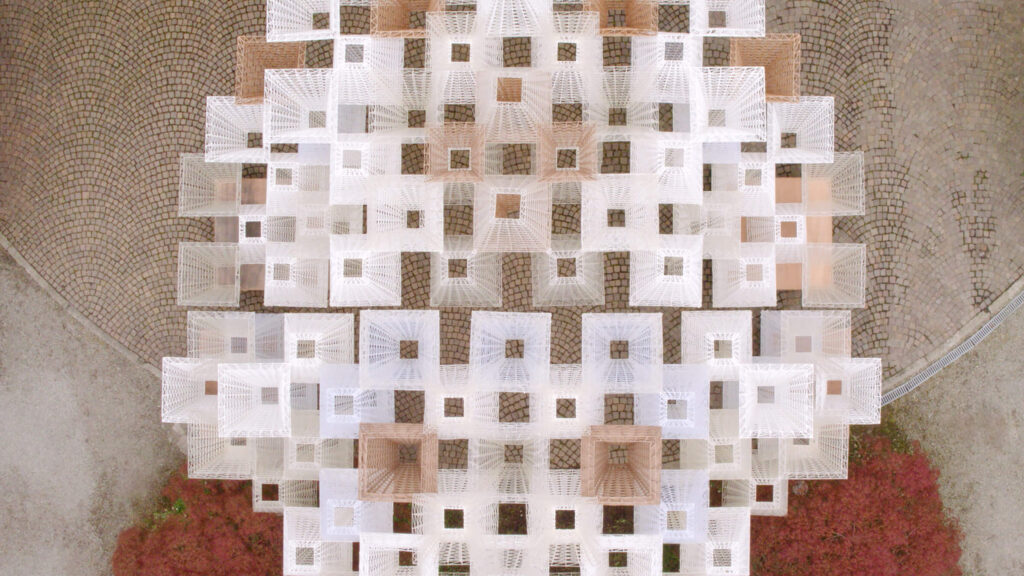
Photography by Andrea Astesiano
A pathway for building brand identity and cultural capital
The integration of brands into art and design fairs reflects a larger shift in how cultural capital is created, distributed, and leveraged. Far from being a passing trend, as audiences grow more attuned to authenticity and trade shows increasingly take on immersive and experiential formats, fairs provide a unique space for brands to bring their own voice to the conversation, deepen consumer engagement, and build cultural legitimacy—ultimately becoming enablers and contributors in the creative landscape. In essence, the fair landscape offers brands something increasingly scarce: contextual relevance in a world of saturated media. Our analysis shows how the tiered nature of the fair ecosystem offers multiple entry points, allowing for calibrated strategies. Whether through top-end global fixtures or local, grassroots activations, brands can position themselves by choosing where—and how—they show up. In this context, storytelling and genuine value alignment become essential assets. For emerging brands, this means they are no longer locked out by budget or prestige; instead, they can leverage creativity, timing, collaboration, and shared values to bolster their identities and make an outsized impact. Overall, the success of a brand’s participation in a fair hinges on its ability to treat the fair not as a backdrop, but as a stage—one where its identity can be expressed in a meaningful and culturally nuanced way.

